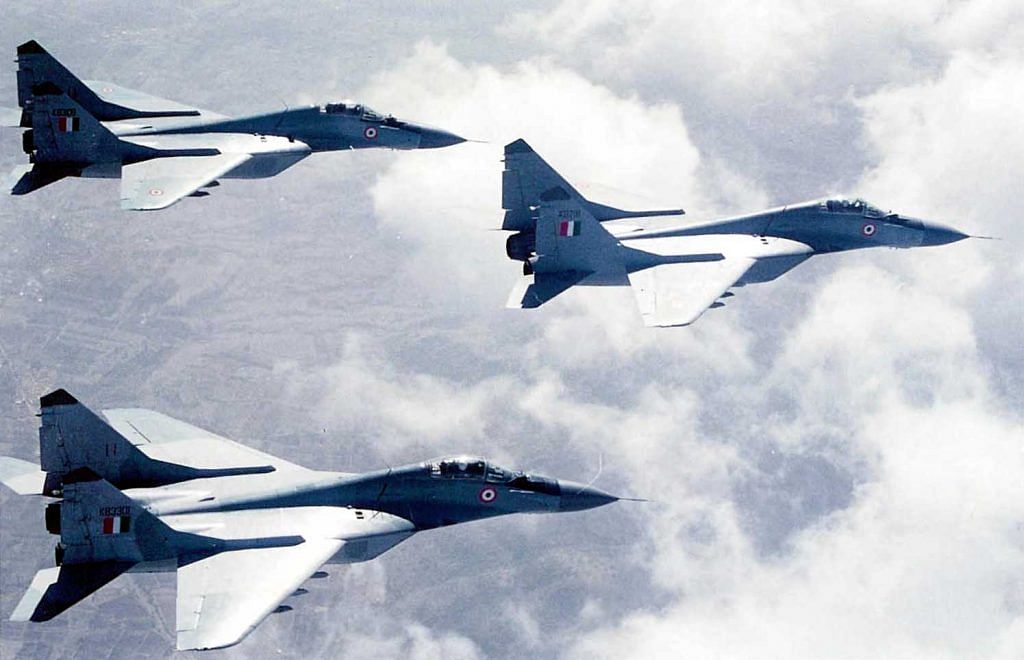IAF will be down to just 29 squadrons by March, against sanctioned 42. The Rafale controversy is being blamed for slowing down acquisition process.
New Delhi: The Rafale controversy has apparently slowed down the Indian Air Force’s plan to procure 114 fighter jets, with the process of acquiring them yet to get the necessary ‘Acceptance of Necessity’ from the defence ministry.
The IAF has been waiting for new fighter jets since 2000 and its hopes were raised after Prime Minister Narendra Modi announced in April that India had rolled out the process to procure them, with a ‘Request for Information’ issued. He had promised to speed up the process and not “waste time like the UPA”.
However, eight months on, there has been little movement on the critical purchase as the raging political controversy over the Rafale fighter jets deal – with the opposition Congress accusing the Modi government of corruption in the acquisition from France – has thrown a spanner in the works, a top defence ministry source told ThePrint.
“The Rafale controversy has led to a fear factor which is delaying the whole process,” the source said. “The fact is that the IAF had been waiting for the fighters since 2000. The government, thankfully, went in for an emergency purchase of 36 Rafale fighter jets, but this will not meet the urgent need of the IAF.”
The proposal for the 114 jets has been going around several desks in the government for months, the source added.
A second source, however, denied there was any delay and rejected the explanation that the Rafale controversy was responsible.
“You can say something is delayed only when there is a fixed time table. The RFI was issued in April this year and it is hoped that the AON will be issued soon,” this source said, referring to the Acceptance of Necessity.
The IAF, the second source claimed, will be able to raise a full squadron of the Light Combat Aircraft Tejas by March and this will ensure that the strength does not fall below 30 squadrons of fighter aircraft.
Dire state of affairs
The IAF has seen a steady decline in its fighter squadrons and at least two more squadrons are due to be phased out by March, bringing the strength down to just 29 as against the sanctioned strength of 42 squadrons. The original plan was to decommission three squadrons by March.
The last time IAF had 42 squadrons was back in 2002.
The IAF’s calculations say it will need at least 45 squadrons to fight a possible two-front war. But achieving that target in the near future appears extremely challenging as more squadrons retire as the aircraft complete their maximum flying cycle.
Also read: IAF’s potential is fast depleting, 36 Rafale jets offer only partial solution
The deal for 114 jets
Seven fighter aircraft are in contention for the mega deal, valued to be worth over $20 billion. While there is no fixed time table that needs to be adhered to, it was hoped that the process would be rushed through.
Following the signing of the deal for 36 Rafales, the government and the IAF were working on bringing out a tender for single-engine fighter aircraft, keeping the cost in mind.
The defence ministry, however, sprang a surprise by questioning the need for a single-engine foreign fighter when the indigenous LCA programme was on. This caused the IAF to retune itself and bring out an RFI in April, which did not limit it to single-engine fighters.
Industry experts wonder how this will play out, because one of the primary factors for the selection of aircraft will be cost, besides technical parameters.
“When it comes to cost, the single engine will always be cheaper than a twin engine,” an industry source said.
Former Air Chief Marshal Srinivasapuram Krishnaswamy said he hoped the process would be speeded up.
“There is no doubt that the IAF needs more fighters. The IAF has come out with numbers, projections, and even said so in Supreme Court. Hopefully, then, the process for the fighters will be faster,” he told ThePrint.
Asked if the high cost of the jets could be a factor causing the delay, Krishnaswamy said: “We live in a democracy and the government allocates priorities. The elections are coming and it would naturally be looking at other plans and projects which will also need money. It is a matter of where the hot potato is.”
Also read: In the defence scam brouhaha, efficacy of Rafale jets, Bofors guns, Agusta helicopters gets drowned
